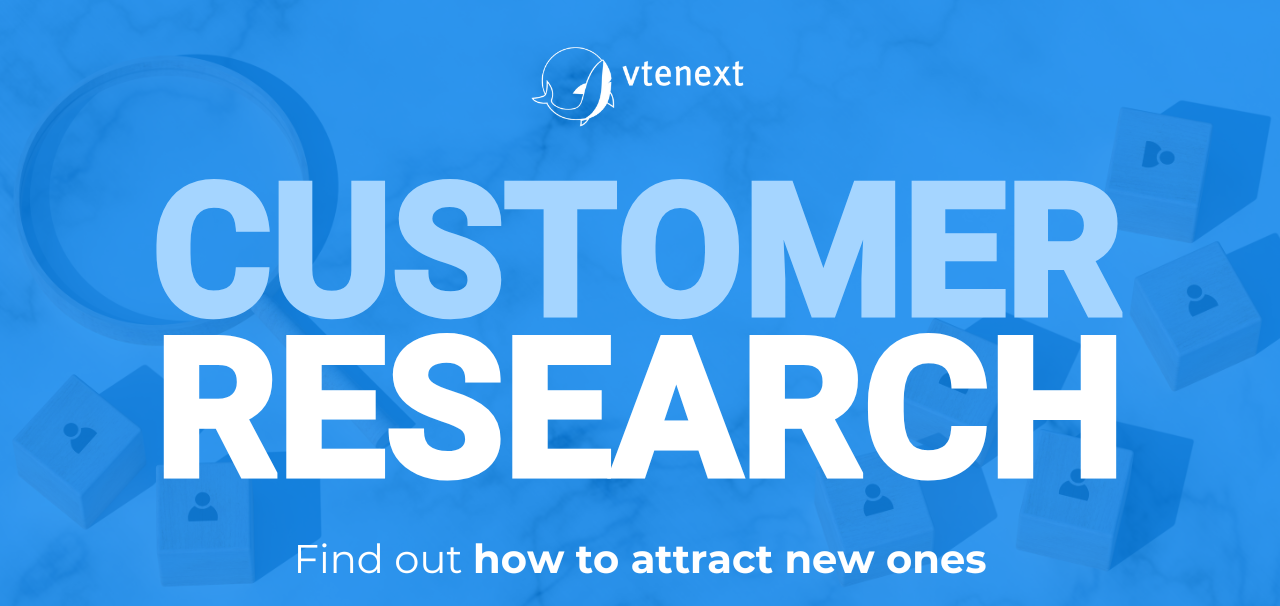The growth of a company inevitably depends on its ability to attract new customers. Every market evolves at a frenetic pace and relying only on existing customers can become a limitation, even a dangerous one. Expanding your audience, on the other hand, means opening up new business opportunities, diversifying revenue and ensuring consistent results over time.
Connecting with different people brings new ideas, inspiration, and perspectives that fuel internal innovation. This constant movement allows a company to stay dynamic, rethink its products, and strengthen its market position.
Customer research and market research: differences and points of contact
When we talk about customer research and market research, we are referring to two different but closely connected activities. The first stems from the need to gain a close understanding of who buys or might buy a product: to identify habits, preferences, motivations, and barriers that influence their choices. It is a very practical investigation that delves into behavioral details and offers immediate insights for adapting communication, offerings, and channels.
Market research operates on a broader level, since it goes beyond direct customers to consider the entire ecosystem: competitors, emerging trends, social and economic changes that affect demand. It is the tool that allows you to understand where the industry is heading and identify new growth opportunities.
The real strength comes when the two perspectives intertwine: understanding your audience in detail makes sense only within a framework that shows how the context evolves; similarly, market dynamics gain value when interpreted in light of real customer experiences.
Knowing the public: quantitative and qualitative data
To build effective strategies, it is necessary to interpret behaviors, motivations and expectations, and this is only possible by combining two complementary perspectives: the quantitative and the qualitative.
Quantitative data is the most objective dimension of the analysis. Age, gender, frequency of purchase, average spending and the channels used are measurable elements that help identify recurring patterns and statistical trends. Thanks to this information, companies can segment customers, assess the potential of specific target groups, and estimate the economic impact of their choices. Taken alone, however, this data provides only a partial picture, useful for describing, but not for explaining.
This is where qualitative research comes in. Interviews, focus groups and open surveys offer the opportunity to directly listen to the opinions, emotions and experiences shared by the audience. These insights may be less immediately comparable, but they are invaluable for understanding the “why” behind the behaviors revealed by the numbers. Each customer represents a combination of perceptions, values, and desires that guide their choices. Likewise, it is essential to distinguish those who have already chosen the company from those who represent potential future customers: the so-called prospects.
The real strength lies in integration. By combining the measurement of numerical data with listening to people’s experiences and opinions, businesses gain a more comprehensive and realistic picture: one that guides decisions on product strategy, communication, and customer experience.
Primary research tools
Primary research represents one of the most effective ways of gathering useful information for business growth, because it is based on direct contact with the company’s target audience. Unlike secondary sources, which provide data already processed by third parties, this approach delivers fresh, specific, and tailored insights aligned with the organization’s objectives.
One of the most common tools is the interview, which allows you to explore the customer’s point of view through targeted questions and open dialogue. This method makes it possible to go beyond simple statistical data, capturing emotional nuances and motivations that influence purchasing decisions. Surveys and questionnaires, on the other hand, provide a broad base of responses that can be easily analyzed and compared, ideal for identifying recurring trends and segmenting the audience.
Another valuable method involves focus groups, where small groups of people discuss a product, service, or communication concept. The group dynamic stimulates spontaneous opinions and highlights strengths and weaknesses that often do not emerge in other forms of research. These tools can be integrated with direct observation of behaviors, especially useful in retail or digital contexts, where the way a customer interacts with an online store or platform becomes a valuable indicator.
The value of direct contact lies precisely in the ability to turn feedback into actionable insights. Companies that systematically adopt primary research not only collect opinions but also build an ongoing dialogue that drives innovation, personalizes their offerings, and ensures closer alignment with customer expectations.
Secondary research sources
Access to information already collected and organized by other organizations, public bodies, or specialized companies is what characterizes secondary research. This approach helps reduce time and costs compared to primary research, while providing a solid foundation to guide business decisions. Such data comes from various sources: industry reports, statistical studies, official databases, academic publications, and market research commissioned by competitors or independent agencies.
The use of these resources goes beyond mere consultation. To take full advantage of them, they must be analyzed based on the company’s specific needs, selecting only the information that is truly relevant for understanding the competitive environment and the habits of potential customers. For example, a food business can draw on national or international consumption data to spot emerging trends, assess the growth of certain categories, and recognize expanding segments.
One of the strengths of secondary research is its ability to provide a broad and comparative view. The available data, often collected on a large scale, allows companies to position their activities within wider macroeconomic dynamics and to identify opportunities that would not be visible when looking only at their own customer base. Moreover, combining this information with primary research provides an even more comprehensive picture, in which general statistics are enriched by real perceptions gathered directly from the public.
Digital strategies for finding new customers
Social media, online communities and social listening activities allow companies to observe spontaneous conversations and identify emerging trends, offering valuable insights for adapting communication and offerings. In parallel, the analysis of browsing data and interactions on websites or e-commerce platforms helps to understand which content attracts the most interest and what obstacles limit conversions.
To turn this information into concrete actions, using a CRM becomes essential. Solutions such as vtenext make it possible to collect data from different channels, segment contacts based on specific criteria, and track the evolution of business relationships. In this way, customer research is no longer an isolated activity but becomes part of a structured process that fosters continuity, efficiency, and sustainable growth.

